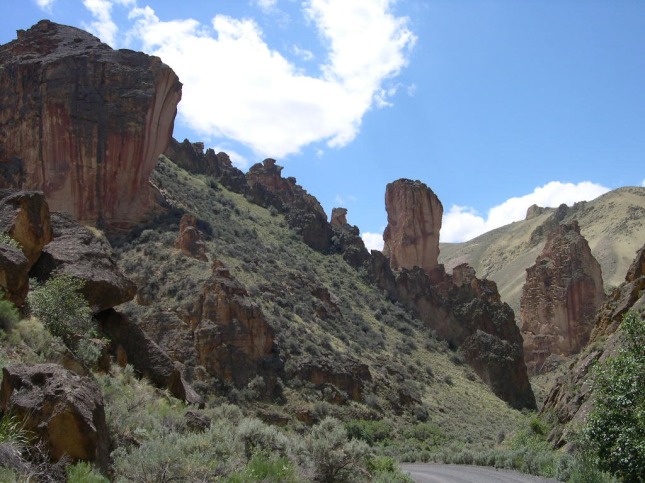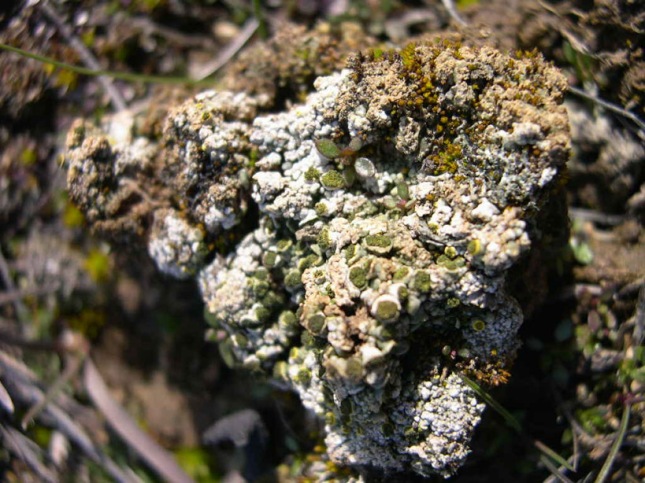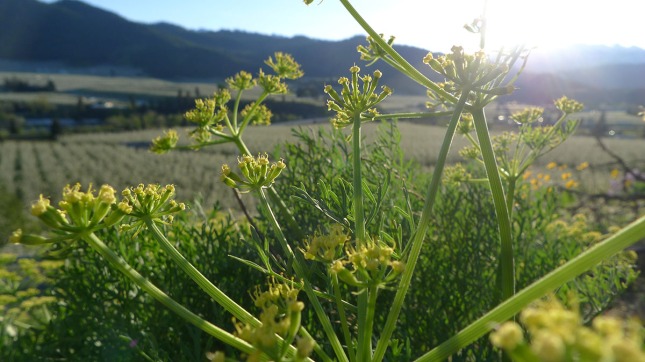Was a vasculum upon a shelf
camera in a backpack in the corner

One of the few things that has changed for a field botanist in 100 years is the invention of plastic bags- prior to this plant specimens were tucked into cases like this- keeping them somewhat humid & uncrushed- until they could be pressed. This one was used at Albertson’s College until being retired.
Once I had the great privilege of meeting Patricia Packard, a botanist known throughout Idaho who had worked all her life at a very small college in southwest Idaho. This college also had a world class herbarium thanks to her lifelong work in the area, with the largest collection of local species even surpassing the nearby bigger and better funded state college collections. Now the herbarium has passed into another botanist’s capable hands, but Pat still spent a lot of her week there, working on this species or that, stacks of pressed plants still being analyzed though she’d gotten too old to hike and really hike and do field work for many years.
I volunteered at the herbarium and Pat asked me out to lunch one day. As I climbed into her Subaru Forester I saw she still had a rock hammer in the side pocket of the door- always prepared for that plant she might see along the road and collect as a specimen still.
Many people she didn’t get along with so well, but to me she was like a kindred spirit though old and a bit gruff on somedays or just very quiet, not outgoing but quite opinionated and still very much with it mentally. We got along great because of our shared love for plants- of the love of life and gaining knowledge of it. What a diverse lot plants are, to study an entire lifetime, but still only have eaten one little bite off a very, very big cake.
After a lifetime of exploring one of the most remote corners of the US- the Owyhee’s- a little corner of Oregon, Idaho, Nevada and Utah that is still today without even cell phone coverage or electricity, not to mention stores or paved roads- collecting thousands of specimens, many species Pat found were new to science. She also fostered a number of devoted botanists from the college who went on to become known in their own right. As a a scientist its against the rules to name things after yourself, but Pat has had a number of species named after her, often by her students who went on to discover new species-
Artemisia packardiae– Packard’s wormwood: a type of sagebrush
Astragalus cusickii var. packardiae– Packard’s milkvetch: related to peas
Eriogonum shockleyi var. packardiae– Shockey’s buckwheat: a very rare thing that looks sort of like a cow pie. Cute little flowers when it blooms though.
Lomatium packardiae– Packard’s desertparsley: a very confusing biscuitroot whose identity is still sort of in question- it’s yellow flowered like least 12 other Lomatiums adding to the confusion
Mentzelia packardiae– Packard’s blazingstar: a bright little yellow flower that grows- like all of these plants- in very specific habitats extremely dependent on soils- the rare geology found in SW Idaho and Owyhees.

Lomatium packardiae- Packard’s desertparsley
As we sat at lunch, me having some weird concoction that they apparently called Mexican food in Nampa, such a bright green color of sauce that it left me questioning if it was natural or not, Pat & I talked of a few things and working at the college. She then told me that she always had wanted to travel, but wasn’t able to because she had to take care of her mother. Apparently she was needing help for a long time which Pat did, staying in Nampa and working at Alberston’s College all her life, until she was old herself.
I was shocked to hear that a woman who had done so much in her life, such a well respected scientist who obviously knew more than most of us will ever hope to, would have any regrets like that. It had seemed to me that she had been everywhere and done that- scaling mountains and building herbariums while most women at that time would just hope to be a nurse or secretary at best. Luckily she was “trapped” in one of the most unique & diverse biological hotspots in the US, as well as one of the least explored.

Leslie Gulch- a “badland” area with spectacular scenery and a number of rare species that grow nowhere else
But
the Chilean Arucarias call
from far on a distant ridge
with winds of the Pacific Ocean
blowing through their hair
the Senecio on Kilimanjaro
of these we have here too
but as herbs near streams
not Dr. Seuss trees
and even Death Valley
the one place no one really wants to go
is the one place a botanist must
like a Mecca of the SW US
only though when the conditions are perfect
the rain has fallen
the temperatures just right
does it become carpeted with rainbows
in which every scene
takes on a surreal quality of resurrection
for life
this fleeting ephemeral thing
was different everywhere
everytime

Death Valley in bloom
but instead we deal in minor nuances
checking every crack for something new
around every corner
doing forensic botany
in which days of life have long since past
drawn to the roots
blown to the wind
studying seed pods
becoming better at those with lesser glamor
more tedious and confusing
to identify

One of the more photogenic lichens- Texosporium sancti-jacobi- green woven spore lichen, also a very rare species in the NW. Many lichens can only be told apart by chemical tests and/or looking at minute features of the spores underneath a microscope.
the minor details
the minor details
(no changes in the bigger picture)
and in those minor details
are all the plants that Pat Packard found
new to science and
that were named after her
without checking those
it is just another plant
another sagebrush
another pea
another …
So many pictures of Mt. Kilimanjaro, but yet people still don’t know what is in their backyards. But if you really wanted to find out, it would take your entire life & still you would only be skimming the surface. If you want to know everything and see everything- you can’t. Its just physically impossible. So you might as well go on vacation to Mt. Kilimanjaro.
And if you find your circumstances do not allow you to Mt. Kilimanjaro, just think of all the things that you could find in your own backyard. More than you could see and know in a lifetime.

My gosh, I was amazed when I found this vignette. I was a student of Pat Packard’s, and went on many a plant-collecting day trip with her, plus some longer field trips. I also worked with Texosporium for a while; I found several previously unknown populations of the species. What a lovely surprise to read this.